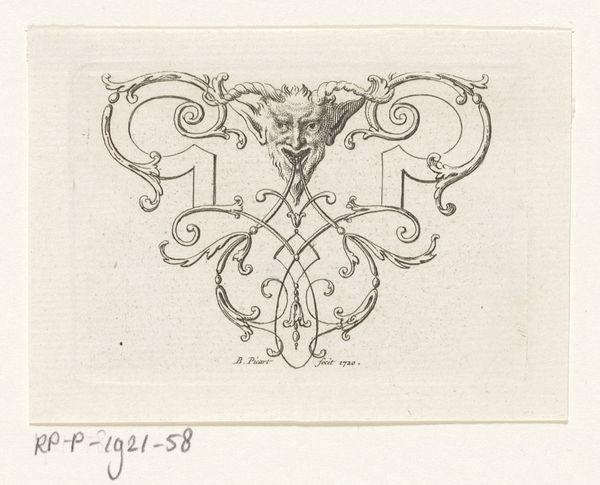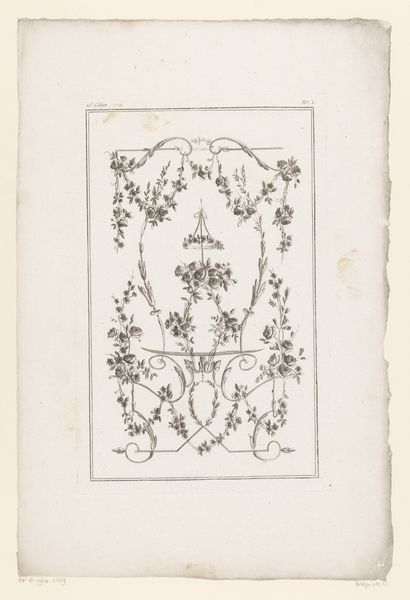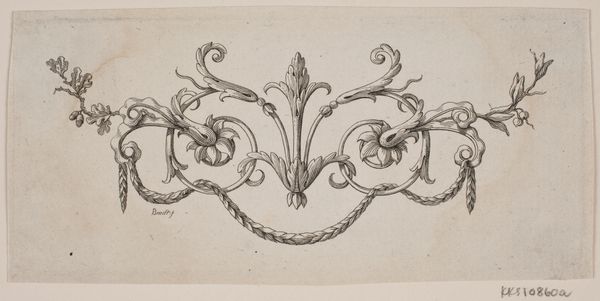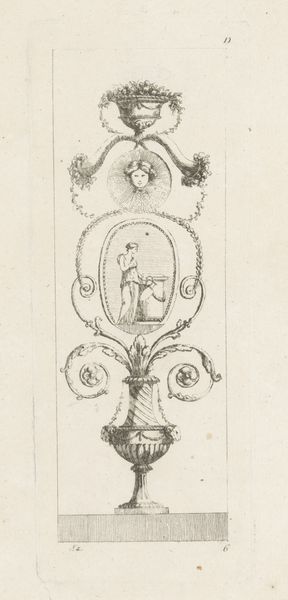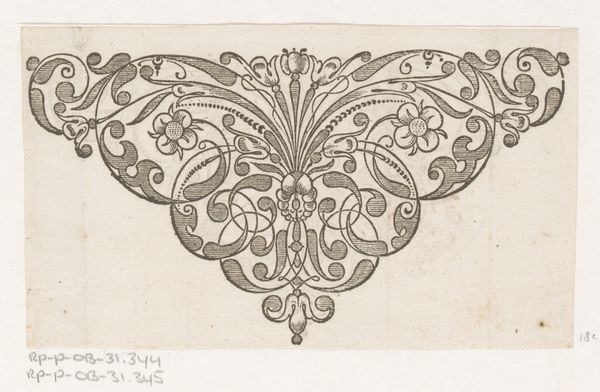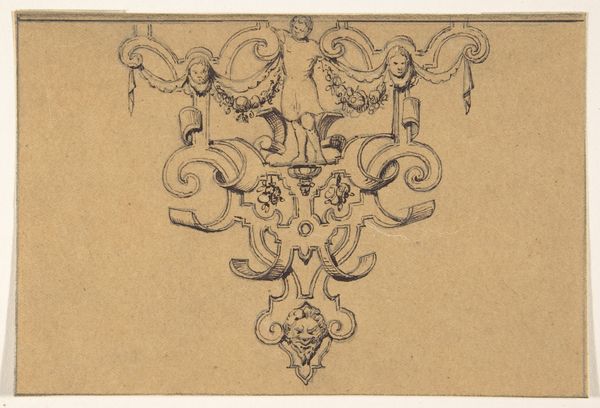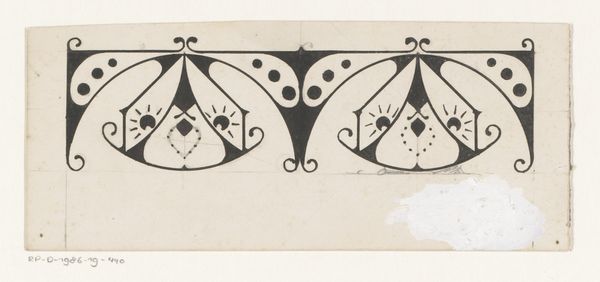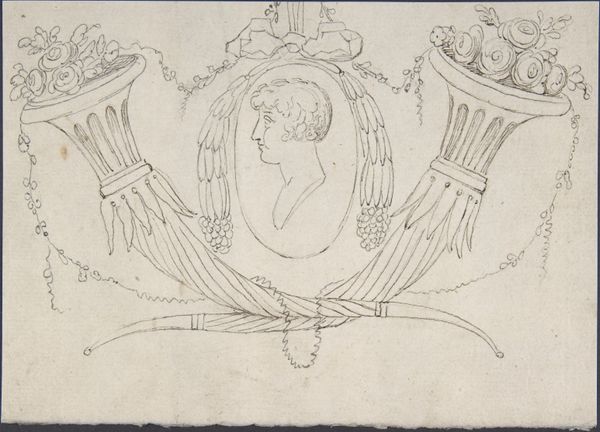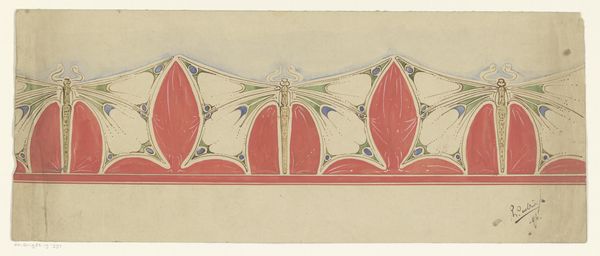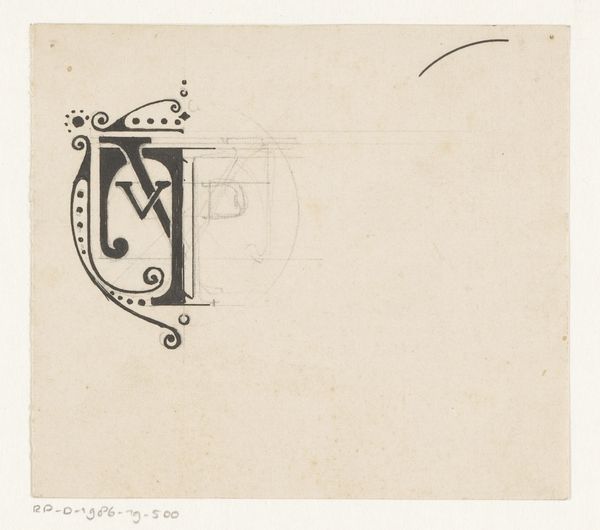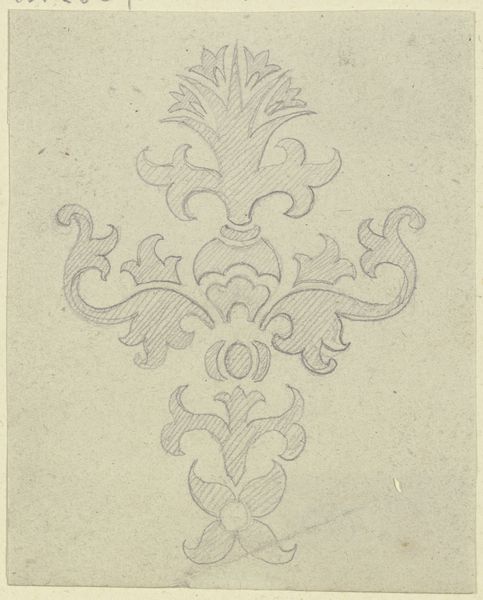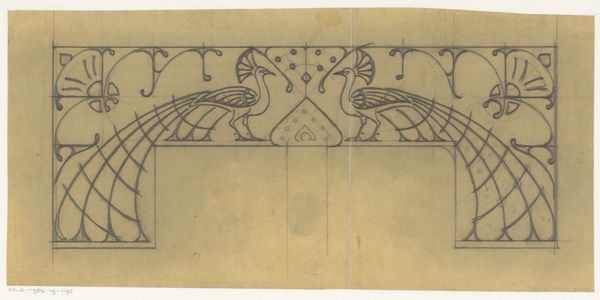
Reclamekaart voor lessen in Versieringskunst door R.W.P. de Vries Jr. 1905
0:00
0:00
drawing, ink
#
drawing
#
art-nouveau
#
figuration
#
ink
#
geometric
#
decorative-art
Dimensions: height 89 mm, width 138 mm, width 275 mm
Copyright: Rijks Museum: Open Domain
Editor: Here we have a drawing from 1905 by Reinier Willem Petrus de Vries Jr., done in ink. It’s titled "Reclamekaart voor lessen in Versieringskunst," which I believe translates to "Advertising card for lessons in Decorative Art". It's this stylized figure, almost geometric, but so graceful. What do you see in this piece? Curator: Immediately, I consider the socioeconomic conditions that fostered such designs. It's Art Nouveau, remember. Notice the clean lines achieved with ink, reflecting an emerging industrial precision combined with the lingering handcrafted aesthetic valued during that period. The figure is interesting. What is she advertising exactly? It’s important to note this piece’s *function*: advertisement. Who were the target consumers and what production methods made it accessible? Editor: So you are saying, the way it was drawn and printed says something about the economics of art at the time? Curator: Precisely! The relative ease and low cost of printing with ink, likely using reproductive technologies like lithography, broadened the reach of art education. Think about who could afford art lessons, and what social aspirations were tied to “decorative arts.” Consider the consumption and social signaling at play. Was this about refining domestic spaces, crafting a specific identity, or something else? Editor: I guess I hadn’t thought of it as an object of production, more like just art, with a capital A! Seeing it as advertisement, a commodity designed to be reproduced, that gives me a new understanding. Curator: Exactly. Art isn’t divorced from material conditions; the techniques, mediums, and intentions behind its making tell a richer story than mere aesthetic pleasure. Understanding those material processes offers deeper insights into both art and society. Editor: This really changed how I think about the piece. It makes you consider its intended audience. Curator: Indeed. Let’s try to think this way more often in approaching other works we see on display today.
Comments
No comments
Be the first to comment and join the conversation on the ultimate creative platform.
